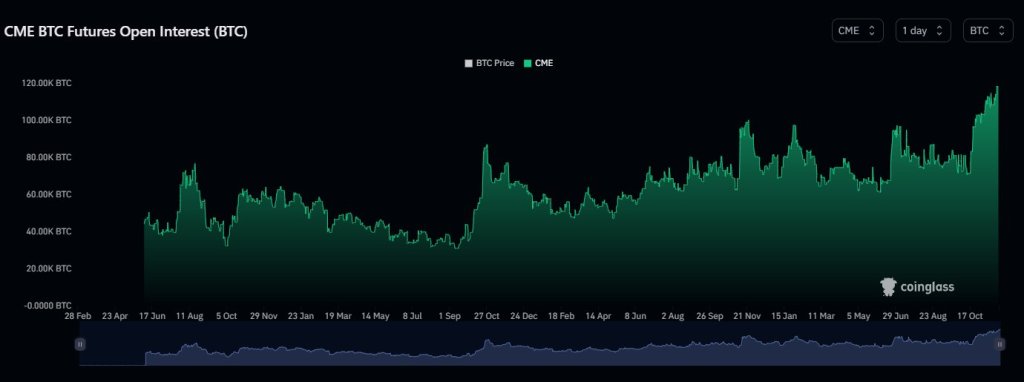2018-11-3 17:00 |
Bitcoin futures are a relatively recent development following regulatory approval at the end of 2018. They allow trading against the future value of Bitcoin but without using exchanges. The introduction of bitcoin futures has provided some interesting developments over the course of this year. Here, we take you through a brief history of bitcoin futures since their introduction and look at what comes next.
What Are Bitcoin Futures?First, for the benefit of anyone who may be hazy on financial terms, what is a bitcoin future?
In a futures contract, two parties agree to trade a commodity at an agreed price on a future date. So for example, think of a farmer who’s selling grain crops at the start of the growing season. If the price of grain drops between now and when he harvests, he is out of pocket.
The buyers of his grain are in the same position but on the other side of the equation. If the price of grain goes up, they could find their products selling at a loss.
Futures are a way of protecting against these fluctuations. The buyer and seller agree to make a particular trade for an agreed price and fixed date in the future. The agreement is a legally binding contract whereby parties must conclude the purchase regardless of any winners or losers.
Financial traders use futures as a way of speculating on the future price of an asset. If they believe prices will rise, then buying assets at a fixed future price allows a trader to sell those assets, or the futures contract itself, at a higher price when market rates go up. It’s a risky business and making a profit relies on an in-depth understanding of market fluctuations.
Bitcoin futures work in a similar way. By buying and selling bitcoin futures contracts, investors can speculate on the future value of bitcoin without ever having to actually own the asset.
A Brief History of Bitcoin Futures At LaunchBitcoin futures had been around for a while before 2018 but traded only on crypto exchanges as unregulated assets. Regulated bitcoin futures were introduced at the end of 2017. Within a single week in December, two prominent futures exchanges, the Chicago Board Options Exchange (Cboe) and the Chicago Mercantile Exchange (CME), both started trading futures based on bitcoin.
The broader financial community welcomed the introduction of bitcoin futures. It was the first opportunity to get involved in trading bitcoin without necessarily having to actually own any. It also offered the protective security and legitimacy of regulation.
In addition, trading in bitcoin futures has a benefit for investors in those countries that have banned bitcoin trading. This is because trading in futures doesn’t mean trading bitcoin itself.
The crypto community also had a surge of initial excitement at the introduction of bitcoin futures. It was thought that the market could see increased liquidity from the influx of new investment.
The price of bitcoin had been steadily rising in advance of these events, the Cboe website crashed the same day that trading in bitcoin futures opened up, and the price of bitcoin increased by 10 percent.
Bitcoin futures average daily volume in Q2 grew 93% over previous quarter, while open interest surpassed 2,400 contracts, a 58% increase. Learn more about trading #Bitcoin futures: https://t.co/adjWVWXBPQ pic.twitter.com/UQWC3nGGrI
— CMEGroup (@CMEGroup) July 20, 2018
When CME opened bitcoin futures trading a week later, bitcoin hit its all-time price high of over $20k USD. Although, as we all know, this didn’t last.
Then Came the BearsThe price of bitcoin dipped steadily over the first few months of 2018. As it plummeted, news outlets started to speculate over whether the introduction of bitcoin futures had done more harm than good. The WSJ released an analysis in January that indicated while smaller investors were bullish on the price of bitcoin, institutional investors trading in bitcoin futures were bearish, driving the price down.
In May, the Federal Reserve Bank of San Francisco released a letter suggesting that the rapid inflation of bitcoin had been driven by optimistic investors who were convinced the market could keep growing. The letter went on to point out that the introduction of bitcoin futures had provided pessimistic investors with a means of shorting the market for bitcoin. Such a means of shorting hadn’t previously existed.
While it’s entirely possible that the introduction of regulated bitcoin futures caused a drop in the market price, the trading volumes don’t necessarily stack up to this theory. CME Group tweeted in July that their second-quarter trading statistics showed an average daily volume increase of 93 percent over the first quarter.
If the Fed’s theory is correct, such a sharp increase in bitcoin futures trading should have impacted the Bitcoin value more significantly in the second quarter of 2018 than the first. Particularly if shorting is the trend. However, the Bitcoin price chart for 2018 clearly shows the steepest market fluctuations over the first quarter.
The first quarter of 2018 was clearly more volatile for Bitcoin than the second.
In addition, trade volumes of bitcoin futures have overall been seen as sluggish, even from the very outset of their launch in December. It’s a big leap to assume such a low volume of transactions could force a significant drop in price.
The Future for Bitcoin Futures: Physical Settlement Enables a Bitcoin ETF?CME and Cboe introduced cash-settled bitcoin futures based on the price of bitcoin at crypto exchanges. However, crypto exchanges remain unregulated. The next big development in the bitcoin futures journey is the introduction of regulated, physically-settled futures contracts.
The Intercontinental Exchange (ICE) which owns the NYSE, has formed a startup called Bakkt, which will launch futures that settle with actual bitcoin. This is a further evolution in bitcoin futures that better meets the requirements of regulators. Bakkt has announced it will launch its bitcoin futures offering in December this year.
By itself, this could be a step that attracts further institutional investment to the bitcoin market. However, there is speculation that the introduction of physically settled futures could help the US SEC approve a Bitcoin ETF. During previous rejections, the SEC cited the dependence of crypto on unregulated exchanges and the overall size of the bitcoin market as reasons to reject bitcoin ETFs. Physically-settled futures could also inject liquidity into the market, meaning that Bakkt is breaking down barriers to an SEC approval.
Final Thoughts2018 has been the first year of regulated bitcoin futures, and the story is far from over. The introduction of bitcoin futures could well be the start of a compelling historical story. In future years, their evolution could describe how bitcoin and other digital currencies were ultimately embraced by mainstream financial markets.
Featured image courtesy of Pixabay
The post A Brief History of Bitcoin Futures and What Comes Next appeared first on CoinCentral.
origin »Filecoin [Futures] (FIL) на Currencies.ru
|
|













